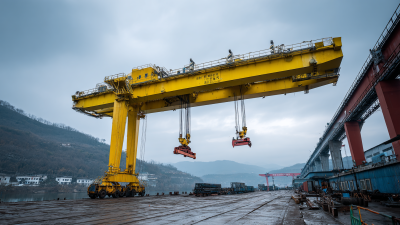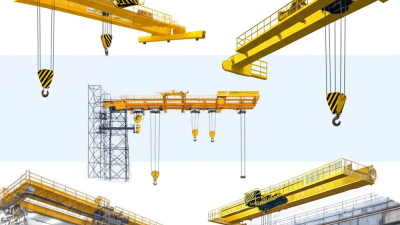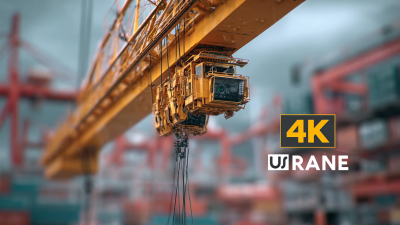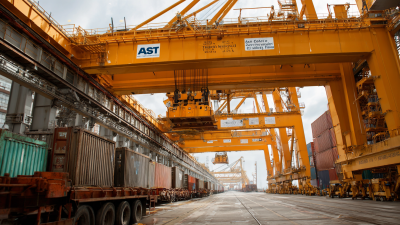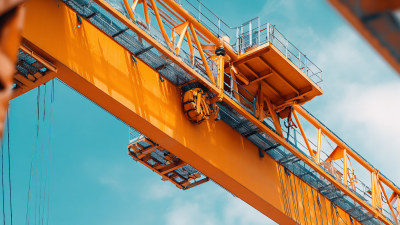Inquiry
Form loading...
-
Phone
-
Wechat

-
Whatsapp

In today's rapidly evolving industrial landscape, the optimization of safety and efficiency is paramount, particularly when it comes to the operation of Over Head Bridge Cranes. According to a report by the Material Handling Industry of America, nearly 80% of material handling accidents can be attributed to improper crane operation, emphasizing the need for stringent safety protocols and effective training programs. Furthermore, the American Society of Mechanical Engineers (ASME) indicates that implementing advanced technology in overhead lifting systems can enhance operational efficiency by up to 30%. As industries continue to prioritize both productivity and worker safety, understanding the best practices and key insights related to Over Head Bridge Cranes becomes essential for maximizing operational performance while reducing risks. This article aims to provide valuable strategies for leveraging this vital equipment effectively in various industrial settings.
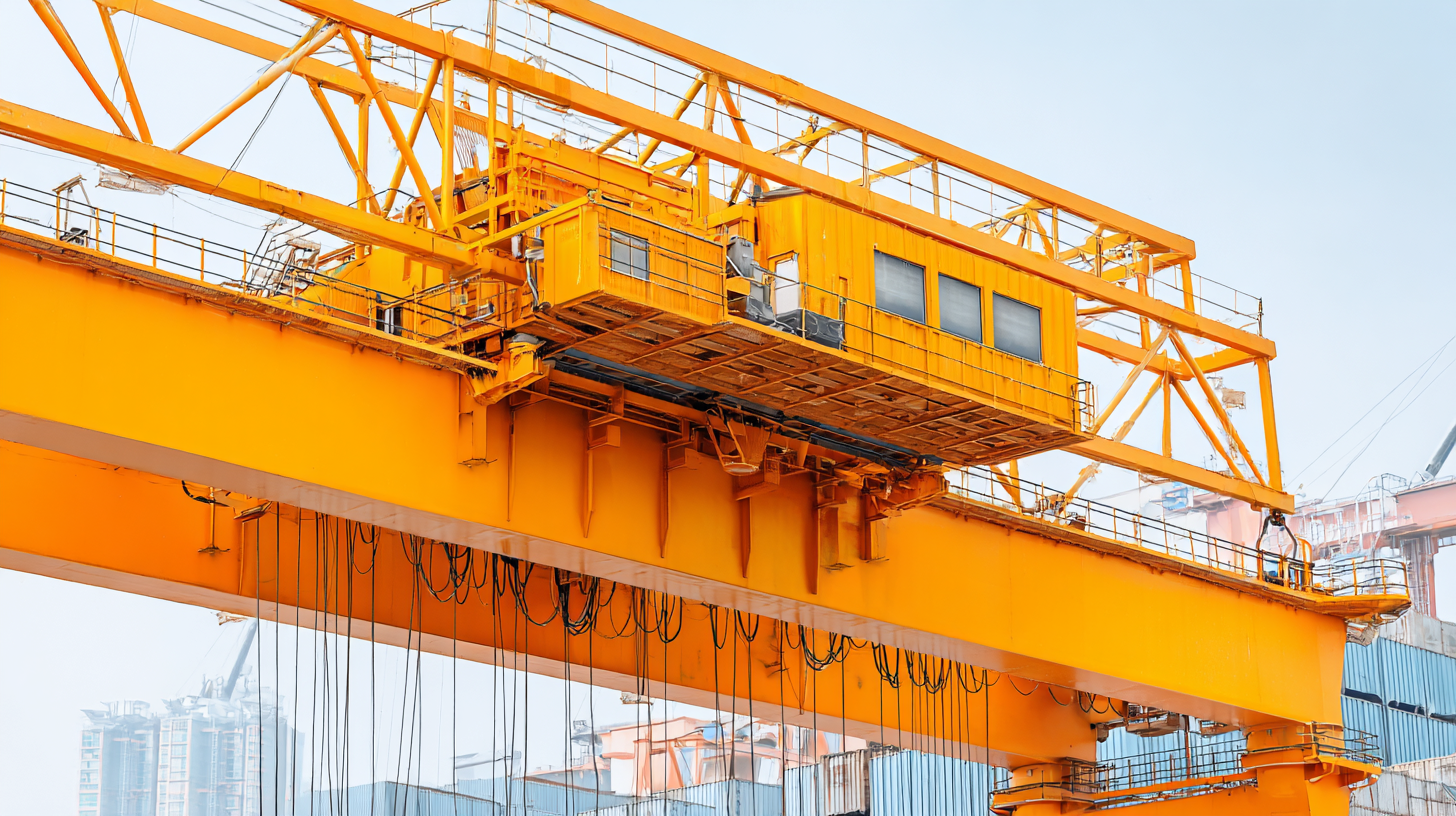
Regular maintenance of overhead bridge cranes is essential for ensuring safety and operational efficiency in various industrial settings. One of the best practices involves scheduling routine inspections to detect potential issues early on. This includes checking the hoist mechanisms, electrical systems, and structural integrity of the crane. Regular greasing of moving parts can prevent wear and tear, ensuring smoother operation and extending the lifespan of the equipment.
**Tips:** Always keep a detailed log of maintenance activities, including dates and findings. This documentation not only helps in tracking the performance but also provides an essential reference for future inspections. Additionally, involve the operators in the maintenance process; they can often identify unusual sounds or behaviors that might signal a problem before it becomes critical.
Another critical aspect of maintenance is adherence to the manufacturer's guidelines. Every overhead bridge crane comes with specific recommendations regarding load limits and maintenance schedules. Following these guidelines closely can reduce the risk of accidents and improve overall efficiency. Regular training sessions for operators on safety and maintenance protocols can also further enhance the safe operation of the cranes in the workplace.
| Maintenance Task | Frequency | Recommended Actions | Safety Tips |
|---|---|---|---|
| Visual Inspection | Daily | Check for any visible damages or wear | Ensure area below crane is clear |
| Lubrication | Weekly | Lubricate all moving parts as per manufacturer's instructions | Use appropriate lubricants to prevent slip hazards |
| Load Testing | Quarterly | Perform load tests to ensure stability and performance | Always verify weight limits before testing |
| Electrical System Check | Monthly | Inspect all wiring and electrical components | Disconnect power before inspections |
| Hoist and Crane Functionality | Annual | Test hoisting and lowering mechanisms | Ensure operator is trained on emergency procedures |
Understanding load limits and stability is crucial for the safe operation of overhead bridge cranes. To optimize safety, operators must be well-versed in the specific weight capacities of their cranes, as each model comes with predetermined load limits based on its engineering design. Exceeding these limits can lead to catastrophic failures, including crane tipping or structural collapse. Therefore, performing regular inspections and adhering to manufacturer guidelines for load limits is essential in ensuring both safety and operational efficiency.
In addition to load limits, stability plays a significant role in preventing accidents during crane operation. Factors such as the distribution of loads, the center of gravity, and the environmental conditions at the job site can greatly influence a crane's stability. Operators should be trained to recognize the signs of potential instability, whether it be due to an uneven load, sudden wind gusts, or other environmental factors. By implementing strict protocols for load management and conducting thorough assessments before lifting operations, organizations can significantly enhance the safety and efficiency of their overhead bridge cranes.
Integrating smart technology into overhead bridge cranes significantly enhances their performance, safety, and efficiency. With advancements in automation and IoT, cranes can now utilize real-time data monitoring to optimize load handling operations. Smart sensors can assess weight distribution, detect potential overloads, and provide crucial feedback to operators, thereby minimizing risks of accidents and damage to materials. This integration not only aids in maintaining compliance with safety standards but also boosts operational productivity by enabling seamless and precise control.
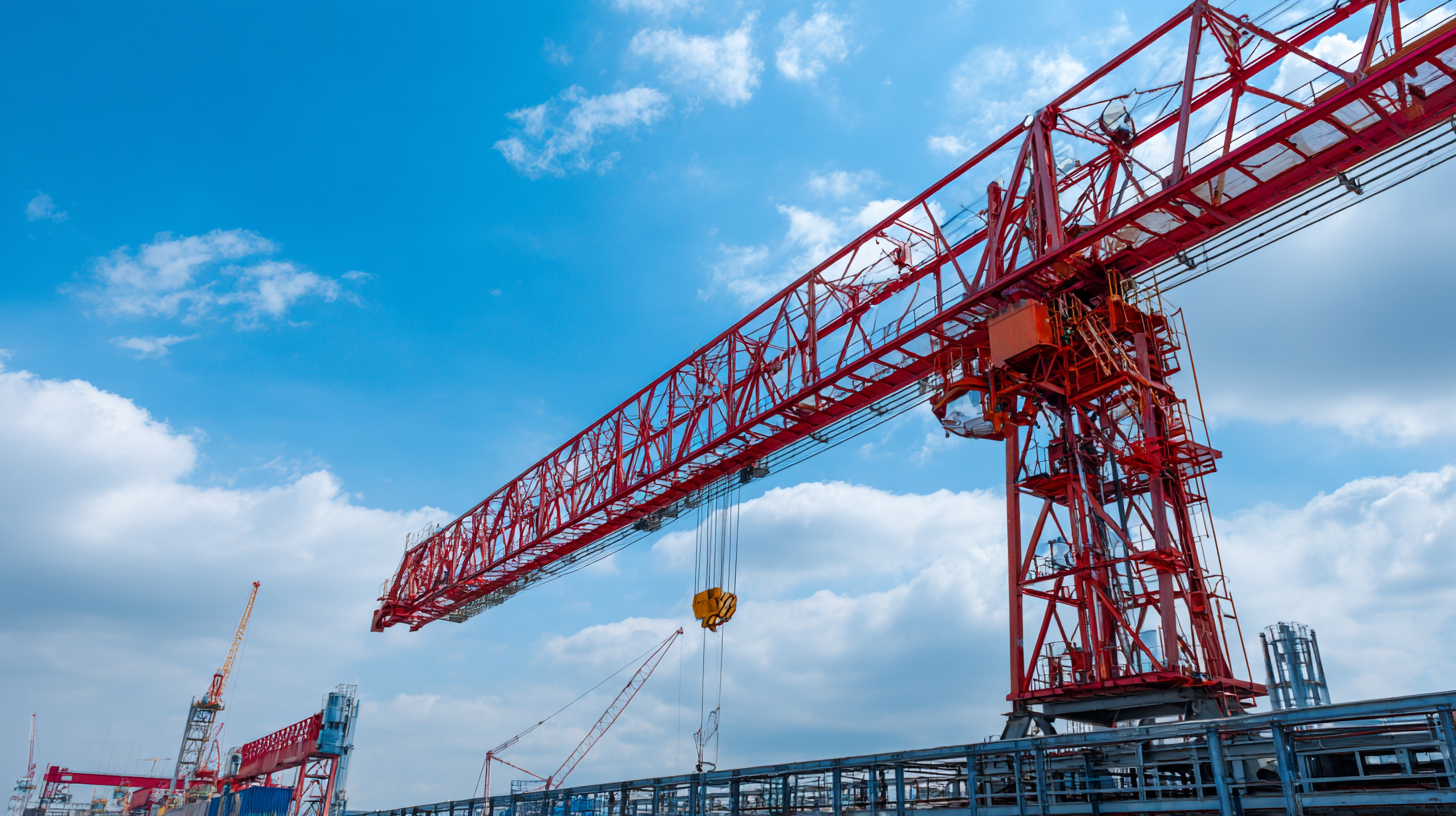 Moreover, the implementation of smart technology allows for predictive maintenance, where data analytics forecasts possible equipment failures before they occur. By analyzing usage patterns and wear-and-tear data, maintenance can be scheduled proactively, reducing downtime and ensuring that equipment operates at peak efficiency. Additionally, operators can benefit from augmented reality systems that provide real-time visual aids and guidance during lifting operations, further enhancing safety and precision. Combining these innovative technologies not only transforms the traditional crane operation into a more controlled and efficient process but also underscores the industry's commitment to leveraging technology for improved workplace safety.
Moreover, the implementation of smart technology allows for predictive maintenance, where data analytics forecasts possible equipment failures before they occur. By analyzing usage patterns and wear-and-tear data, maintenance can be scheduled proactively, reducing downtime and ensuring that equipment operates at peak efficiency. Additionally, operators can benefit from augmented reality systems that provide real-time visual aids and guidance during lifting operations, further enhancing safety and precision. Combining these innovative technologies not only transforms the traditional crane operation into a more controlled and efficient process but also underscores the industry's commitment to leveraging technology for improved workplace safety.
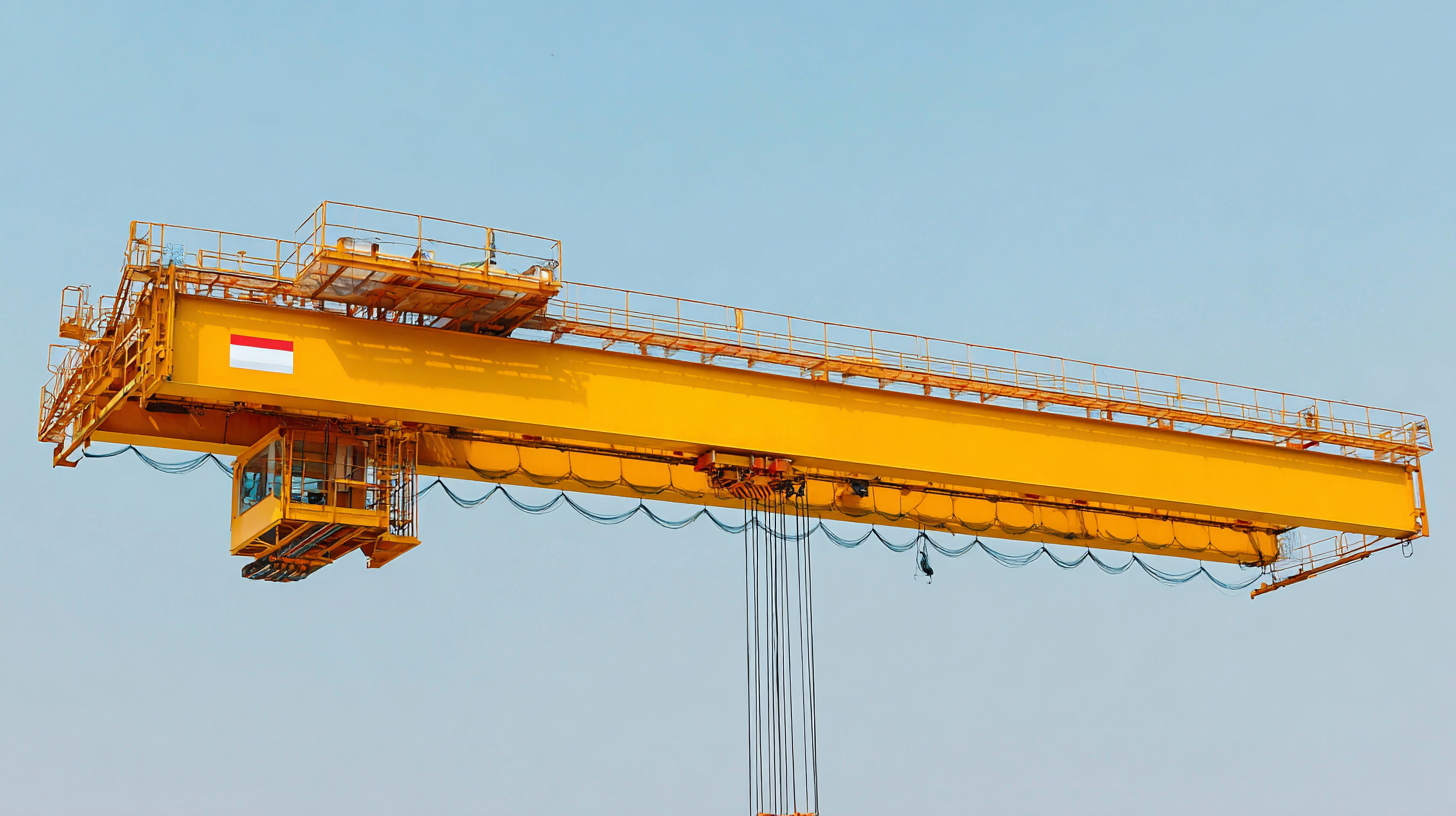 Training and educating operators of overhead bridge cranes are crucial for optimizing safety and efficiency in any industrial setting. Comprehensive training programs should encompass not only the technical aspects of crane operation but also the relevant safety protocols. Operators must be well-versed in recognizing potential hazards, understanding load limits, and being able to perform regular inspections.
Practical training sessions that simulate real-life scenarios can greatly enhance an operator's ability to respond effectively to emergencies, thereby fostering a culture of safety within the workplace.
Training and educating operators of overhead bridge cranes are crucial for optimizing safety and efficiency in any industrial setting. Comprehensive training programs should encompass not only the technical aspects of crane operation but also the relevant safety protocols. Operators must be well-versed in recognizing potential hazards, understanding load limits, and being able to perform regular inspections.
Practical training sessions that simulate real-life scenarios can greatly enhance an operator's ability to respond effectively to emergencies, thereby fostering a culture of safety within the workplace.
Moreover, ongoing education is essential in keeping operators informed about the latest industry standards and technological advancements. Regular refresher courses can help reinforce safety best practices and address any changes in equipment or procedures. Implementing mentorship programs, where experienced operators share their knowledge with newcomers, can also establish a strong foundation of safety awareness. By prioritizing operator training and education, companies can significantly reduce the risk of accidents, ensuring a safer and more efficient working environment for everyone involved.
Implementing safety inspections and compliance checks in crane operations is critical to ensuring the safety of both workers and equipment. Regular inspections should cover all aspects of overhead bridge cranes, including structural integrity, load-lifting capabilities, and operational mechanisms. These inspections must be conducted by certified professionals who understand the intricacies of crane systems and can identify potential hazards. Maintaining a detailed log of inspections and any issues that arise can help in tracking performance and ensuring compliance with industry regulations.
Furthermore, establishing a robust compliance program aids in reinforcing a culture of safety within the workplace. Training employees on the importance of safety checks and encouraging them to report any irregularities enhances overall operational efficiency. Regular safety drills and workshops ensure that all staff members are familiar with proper procedures and emergency protocols. Investing in compliance not only reduces the risk of accidents but also optimizes performance by preventing costly downtime associated with equipment failure or safety violations. By prioritizing safety inspections and compliance checks, organizations can enhance both the safety and productivity of their crane operations.
